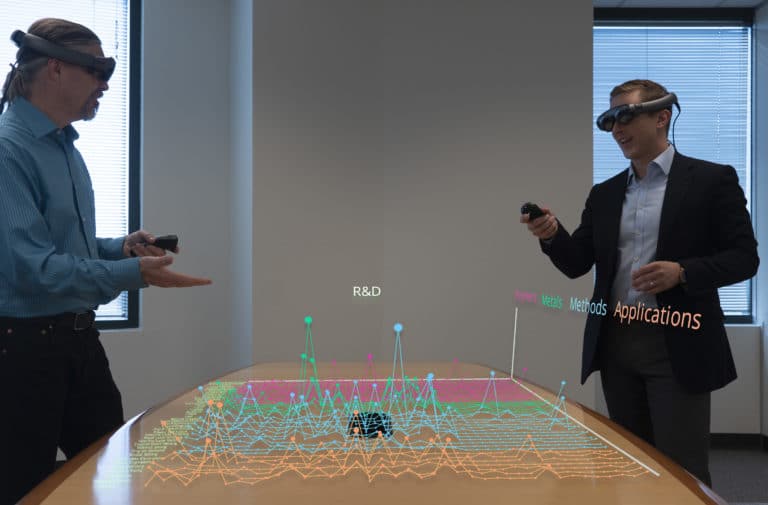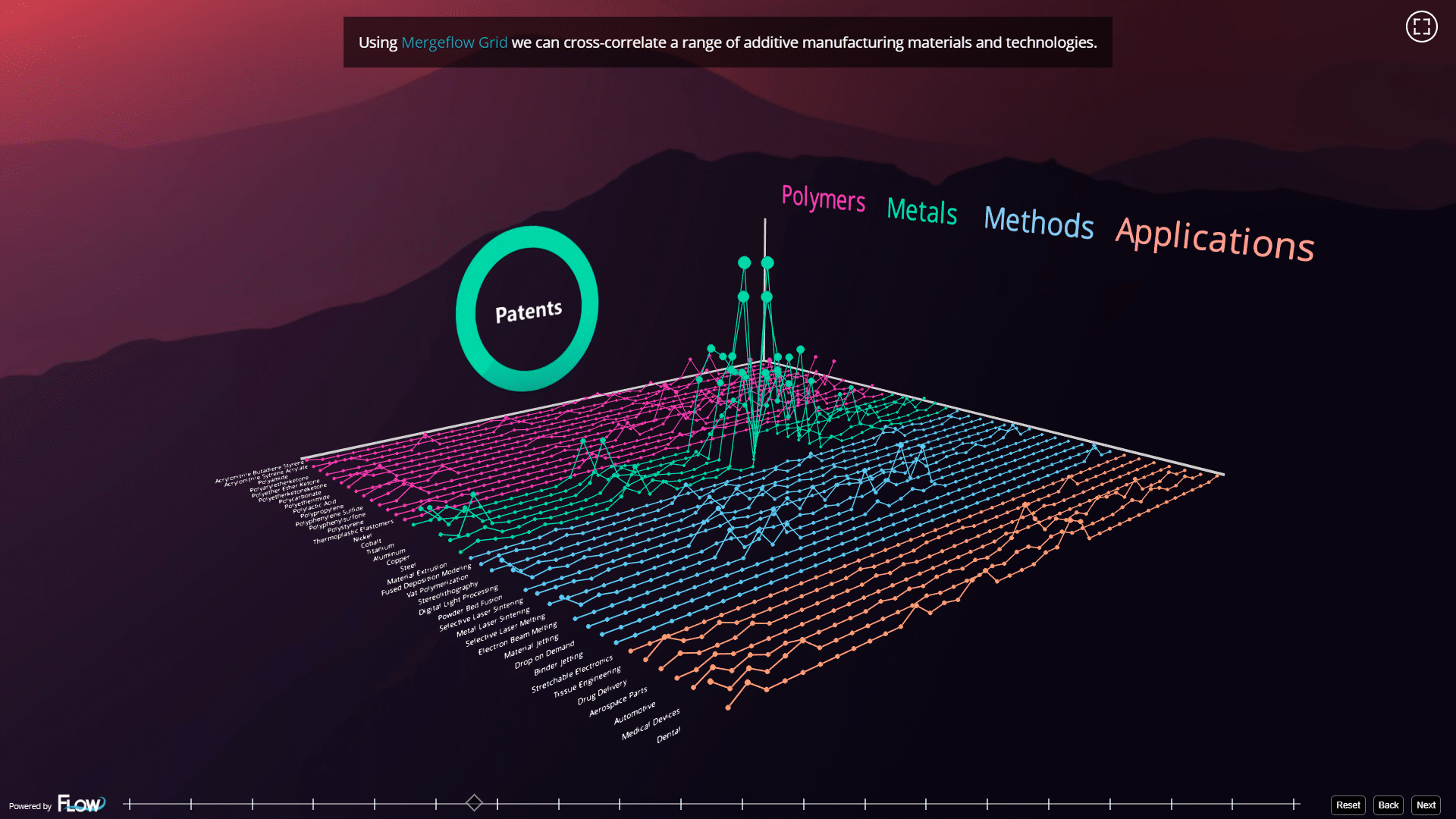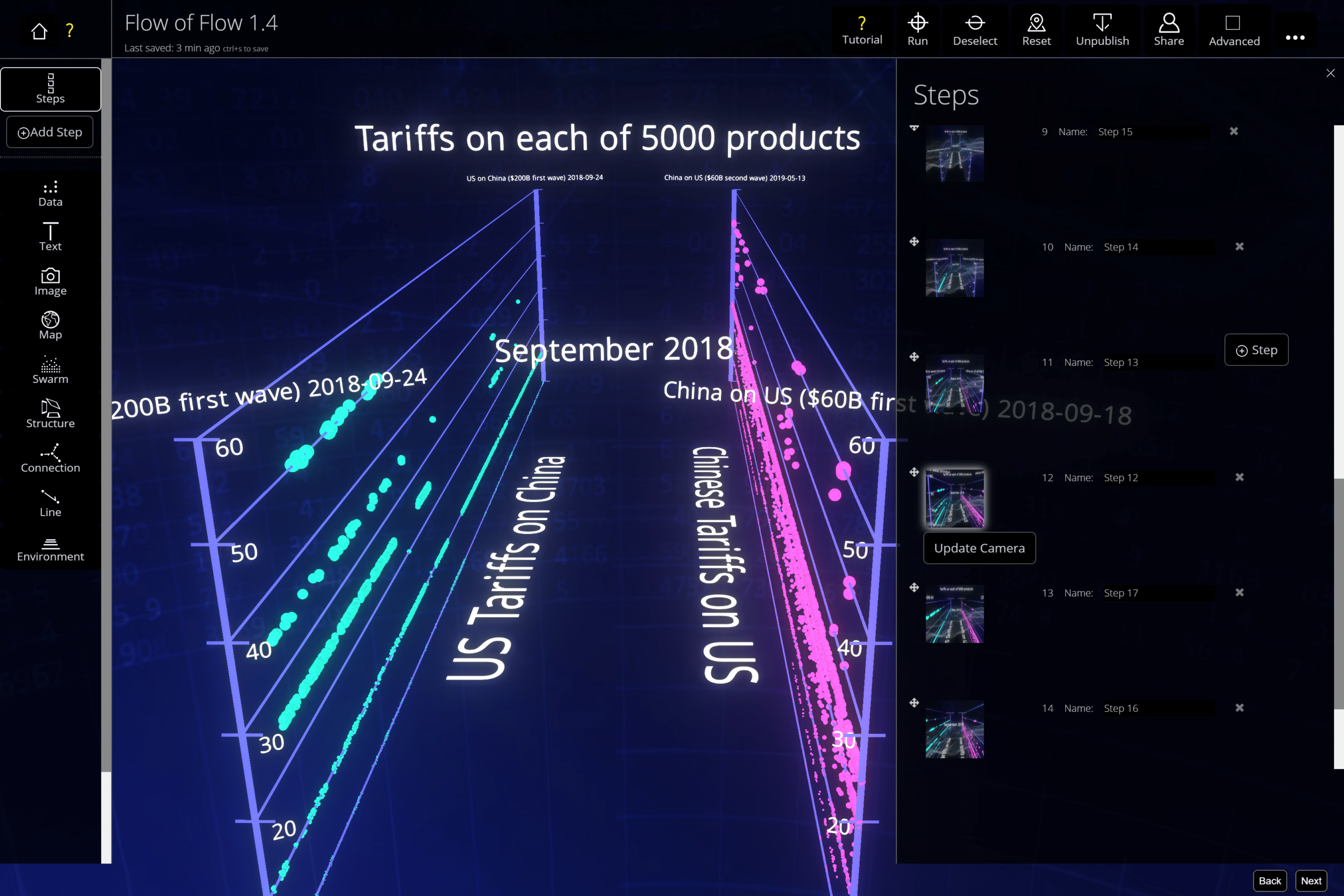
“Trendline” is AR Insider’s series that examines trends and events in spatial computing, and their strategic implications. For an indexed library of spatial computing insights, data, reports and multimedia, subscribe to ARtillery PRO.
One of spatial computing’s “sleeping giant” use cases is data visualization. This resonates with us, given lots of market sizing and financial modeling done through our research arm, ARtillery Intelligence. The idea is that complex data sets can be seen in three dimensions, as they should.
This unlocks lots of perspective in terms of being able to plot data on X, Y and Z axis. That not only makes data arrays more logical and comprehensible at a glance, but it also unlocks new capabilities for anyone to achieve new levels of meaning and impact than with 2D slides.
This is where Flow Immersive hangs its hat. We’ve been talking to the company for a few years and playing with its data visualization modules in VR. These include compelling experiences such as financial market data, as well as 3D word clouds for literary works like Hamlet.

Best of Both Worlds
The company is now expanding this concept to AR. Though VR’s high degree of immersiveness has virtues for the company’s data visualization mission, AR makes more sense in some contexts. For example, professional collaboration to view data together in the same space.
Today the company takes the first big step towards that expansion down the spatial computing spectrum. It has announced that its Flow Spaces runs on the Magic Leap One, which it believes wiill transform the way that enterprises can conduct in-person meetings.
“Flow data presentations float between us, creating an interactive, conversational environment,” CEO Jason Marsh told us. “The technology increases human connection because we can see information and people within the same gaze instead of diverting attention to a wall.”
This is also one of those classic AR moments that invoke movie scenes for context or inspiration. The first thing we thought of was a scene in Star Wars, Episode II when a 3D array of a star system filled the room so that characters could walk around and locate a missing planet.
Wide Net
The way this plays out is with interactive content and data arrays that can float over a board room table. The data are anchored and positionally tracked so that many users can view, reference and interact with the data. This is similar to “multi-player” functionality like Google’s Cloud Anchors.
More importantly, Flow is big on simple tools that democratize experience creation. Just like it applied to its VR data visualization, non-technical users can create its signature data stories using an online Flow Editor. Marsh likens the required skill level to that of building Powerpoint slides.
Also true to simplicity and maximum accessibility, Flow takes a Web XR approach in most of its dealings. This approach carries over to the Magic Leap integration by running content through Magic Leap’s Helio browser. So there aren’t any apps required for creation nor consumption.
“Magic Leap, in particular, with its Helio browser, is currently the most WebXR-compatible AR headset,” Marsh said in support of the platform choice and its benefits. “There is little friction to share content because a simple URL gets people into the experience very quickly.”

Sleeping Giant
Further doubling down on accessibility and ease of use, Flow makes these experiences available on other platforms including any smartphones or tablet. This is a key step, as Flow doesn’t want to impede its own addressable market to the current penetration of Magic Leap One.
This is a similar approach taken by Spatial, a company that likewise taps into the virtues of AR to combine content visualization with human interaction and collaboration. In fact, Spatial was the first company that came to mind when recently discussing AR expansion with the Flow team.
Flow VP of product Michael DiBenigno says Spatial is more complimentary than competitive. While Spatial connects far-flung teams in a 3D collaborative virtual space, Flow’s is more about the content of those meetings. The 2D analogy is that Spatial is Zoom while Flow is Powerpoint.
This will be a compelling product, and a logical extension for Flow. AR hardware penetration gates the opportunity to a certain degree, but the use case will be an important and prevalent one when the hardware base penetrates further. We’ll see if it’s the AR slepping giant we think it can be.
For deeper XR data and intelligence, join ARtillery PRO and subscribe to the free AR Insider Weekly newsletter.
Disclosure: AR Insider has no financial stake in the companies mentioned in this post, nor received payment for its production. Disclosure and ethics policy can be seen here.
Header image credit: Flow Immersive
